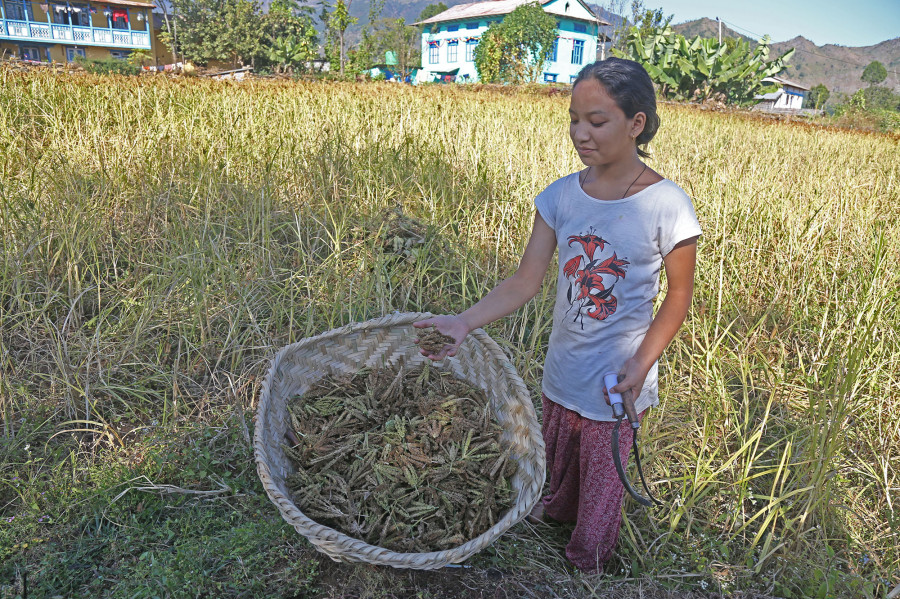Columns
Rediscovering hidden treasures of neglected crops
While they sound like a breed that can be obtained through say, genetically modified crops, these future smart foods are actually our traditional crops.
Arun GC
Nepal was widely praised for its progress towards achieving the Millennium Development Goals (MDG) which started in 2000 and ended in 2015. But the world has moved on to a new set of agendas post-2015, widely known as the Sustainable Development Goals (SDGs). The 17 goals of the SDGs are highly interlinked. Therefore, unsatisfactory progress in any one goal will significantly affect others. Among them, the second goal is Zero Hunger, which aims to end all forms of hunger and malnutrition by 2030. This is another form of trying to achieve food security. Hunger is related to food security but is significantly different in several dimensions. Food security is more about psychology while hunger is more about physiology.
According to the latest series of the State of Food published in 2018 by the Food and Agriculture Organisation (FAO), world hunger has been increasing at a worrisome rate for the last three years. The number of the undernourished population decreased from 947 million in 2005 to 785 million in 2015. But in 2018, it rose to 822 million. This indicates that undernourishment is becoming a serious problem at the global level, especially given the international commitment to end hunger by 2030.
In Nepal, the undernourished population was less than 15 percent in 2000. Even with fluctuations, the figure reached a low point in 2015, at 10.6 percent. However, following global trends, undernourishment has seen a slight increase in Nepal since 2015. Highly influenced by the earlier definitions of food security, several development interventions in Nepal link food security with the consumption and production of rice. This idea of food security is intensely encapsulated in the mind of the general public; mainly in rural landscapes including the mid- and far-western hills and mountains.
The problem here is that many think dropping off rice by helicopter to rural and remote regions is enough to ensure food security. But this would not help us achieve the Sustainable Development Goals at all. Rice alone cannot overcome hunger. More importantly, the ‘hidden hunger’, which refers to micronutrient deficiency, is the real problem. Interestingly, some organisations are advocating for fortified rice. While this approach may be good during a humanitarian crisis it will certainly undermine our entire agroecological, economical and food diverse system.
To overcome hunger and hidden hunger, the Food and Agriculture Organisation (FAO) regional office for Asia and the Pacific has, since 2018, come up with a new initiative known as Future Smart Food.
Future Smart Foods are those foods that have greater resilience in the context of climate change and have higher efficiency when it comes to water and other resource utilisation. But more importantly, they provide diverse nutrients. While they sound like a breed that can be obtained through say, genetically modified crops, these future smart foods are actually our traditional crops—chino, kagunu, millet, colocasia, local beans, local chillies and so on—crops that were often neglected and underutilised. Simply speaking, future smart food is the rebranding of these traditional crops. Asian countries including Nepal have a huge variety of such crops which are not only rich in diverse nutrient make-up but have significant medicinal values too.
Many might question why foods need such rebranding. But in reality, names and brands may create serious barriers to adoption. Take for instance the Tata Nano car. Many experts opine that that labelling the Nano as a low-cost car prevented wider acceptance, because people equated the car as being for the poor. In the same way, there are indigenous foods in Nepal that were previously labelled as poor people's food. The dhindo for years had this labelling, until a recent resurgence among the middle and upper-middle class.
Therefore, the rebranding of neglected and underutilised crops could revitalise its production and utilisation. The promotion of various food crops under such a banner would not only ameliorate the nutritional status of the general public but also enhance biodiversity, which we are losing rapidly. As it is, biodiversity is very important for future food security, too. Hence, the government should mainstream Future Smart Food. Reorientation of rice-based food security is the very first step towards the promotion of Future Smart Food. Most of the future smart foods have either low yield or poor market chain. Therefore, its increasing yield is something that agriculturists must indulge in immediately.
***
What do you think?
Dear reader, we’d like to hear from you. We regularly publish letters to the editor on contemporary issues or direct responses to something the Post has recently published. Please send your letters to [email protected] with "Letter to the Editor" in the subject line. Please include your name, location, and a contact address so one of our editors can reach out to you.




 16.12°C Kathmandu
16.12°C Kathmandu













%20(1).jpg&w=300&height=200)

